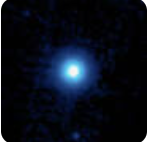POPE SINGS LUCIFER IS THE FATHER OF JESUS - BLASPHEMY
This is old news, but YES, the #Pope and the #Catholic Church worship #Satan
The building is even built in the shape of a serpent!
So if you happen to be a Catholic, "Come out of her my people"
LEAVE the deceiver filled Catholic church!
YOU are the Temple of the Yahuwah, not any building made by the hands of man!
It should be pretty easy to tell, but in case you can't... ANY actual believer will NOT sit his fat carcass on a throne of gold and tell lies!
You know, while playing a major role in the worldwide #OrganizedCrime syndicate of supposed "governments" and #Bankers and other #Satanic #Cults around the world who use mind control, trickery, and deception to enslave their fellow man!
And let's NOT forget #Violence, which they also use pretty regularly!
The Vatican is right there with the rest of them, especially the supposed "governments" who are in reality, the same group of Satanists, responsible for the #Heliocentric LIE, which is in reality a secret SUN CULT!
The Vatican and the scumbag #Jesuits have funded and built many "telescopes" with names like "LUCIFER," and have pumped out many "astronomers" to tell you LIES!
Don't be HELIOS-SIN-TRICKED by their fantastical tales of "outer space" and "aliens" which cannot possibly exists since we live inside of a CLOSED SYSTEM with the #Firmament above!
https://old.bitchute.com/video/yOVS9672gxqX/
This is old news, but YES, the #Pope and the #Catholic Church worship #Satan
The building is even built in the shape of a serpent!
So if you happen to be a Catholic, "Come out of her my people"
LEAVE the deceiver filled Catholic church!
YOU are the Temple of the Yahuwah, not any building made by the hands of man!
It should be pretty easy to tell, but in case you can't... ANY actual believer will NOT sit his fat carcass on a throne of gold and tell lies!
You know, while playing a major role in the worldwide #OrganizedCrime syndicate of supposed "governments" and #Bankers and other #Satanic #Cults around the world who use mind control, trickery, and deception to enslave their fellow man!
And let's NOT forget #Violence, which they also use pretty regularly!
The Vatican is right there with the rest of them, especially the supposed "governments" who are in reality, the same group of Satanists, responsible for the #Heliocentric LIE, which is in reality a secret SUN CULT!
The Vatican and the scumbag #Jesuits have funded and built many "telescopes" with names like "LUCIFER," and have pumped out many "astronomers" to tell you LIES!
Don't be HELIOS-SIN-TRICKED by their fantastical tales of "outer space" and "aliens" which cannot possibly exists since we live inside of a CLOSED SYSTEM with the #Firmament above!
https://old.bitchute.com/video/yOVS9672gxqX/
POPE SINGS LUCIFER IS THE FATHER OF JESUS - BLASPHEMY
This is old news, but YES, the #Pope and the #Catholic Church worship #Satan
The building is even built in the shape of a serpent!
So if you happen to be a Catholic, "Come out of her my people"
LEAVE the deceiver filled Catholic church!
YOU are the Temple of the Yahuwah, not any building made by the hands of man!
It should be pretty easy to tell, but in case you can't... ANY actual believer will NOT sit his fat carcass on a throne of gold and tell lies!
You know, while playing a major role in the worldwide #OrganizedCrime syndicate of supposed "governments" and #Bankers and other #Satanic #Cults around the world who use mind control, trickery, and deception to enslave their fellow man!
And let's NOT forget #Violence, which they also use pretty regularly!
The Vatican is right there with the rest of them, especially the supposed "governments" who are in reality, the same group of Satanists, responsible for the #Heliocentric LIE, which is in reality a secret SUN CULT!
The Vatican and the scumbag #Jesuits have funded and built many "telescopes" with names like "LUCIFER," and have pumped out many "astronomers" to tell you LIES!
Don't be HELIOS-SIN-TRICKED by their fantastical tales of "outer space" and "aliens" which cannot possibly exists since we live inside of a CLOSED SYSTEM with the #Firmament above!
https://old.bitchute.com/video/yOVS9672gxqX/
1 Comments
0 Shares
924 Views












